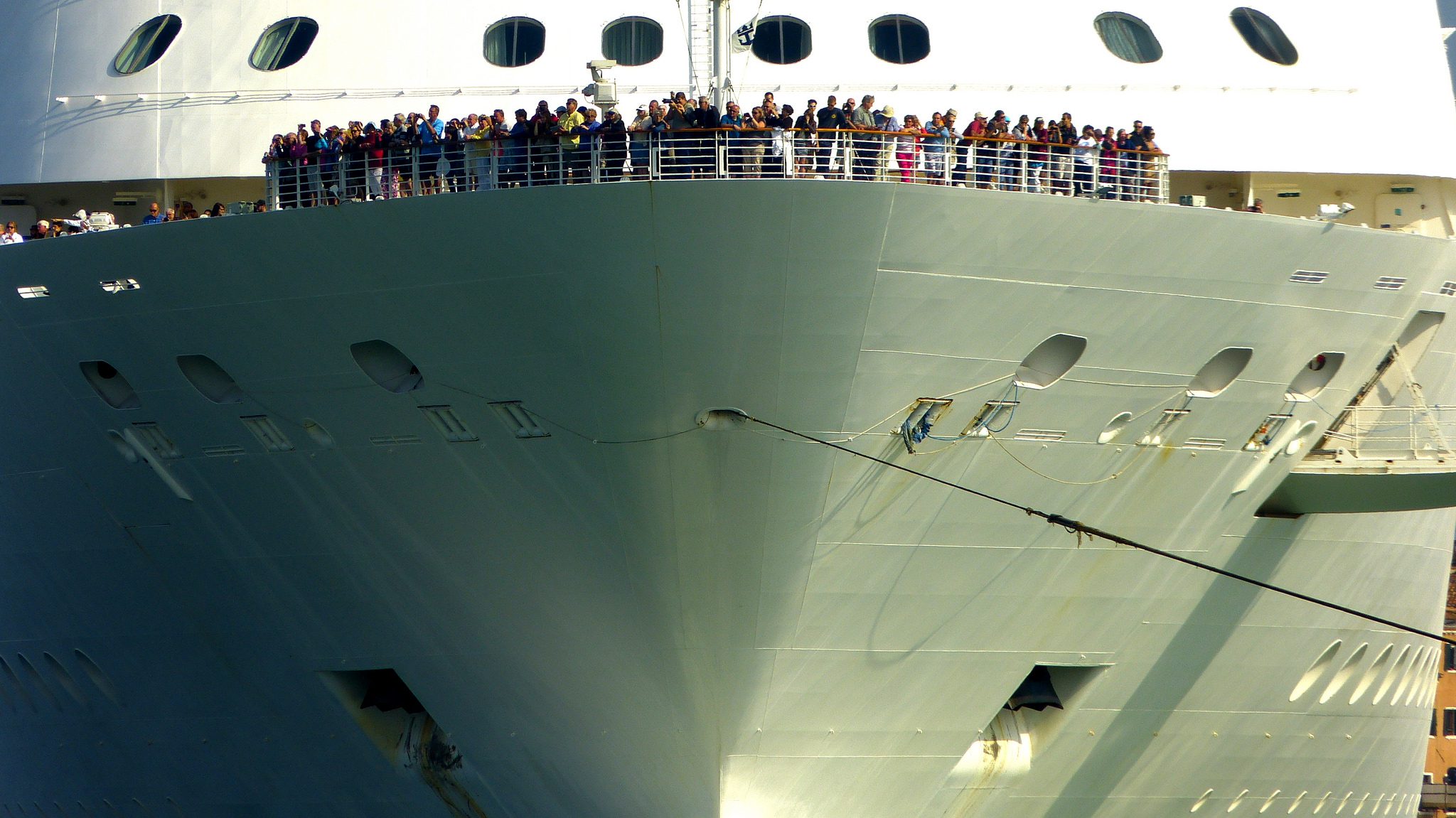Was The World’s ‘Northern-Most Island’ Erased From Charts?
by Kevin Hamilton (University of Hawaii) In 2021, an expedition off the icy northern Greenland coast spotted what appeared to be a previously uncharted island. It was small and gravelly,...


A cruise ship leaving from Venice. Photo by Mariano Mantel via Flickr
This is PART 3 of a series about the COLREGs. Scroll down for links to Part 1 & 2
by Captain Grant H. Livingstone The Grand Daddy of COLREGs debate and interpretation among professional mariners may be Rule 34; traditionally called the ‘Danger Signal’ five short blasts on the ships whistle. I have sailed with professional mariners that would sound five short blasts at everything and those that would only sound five short blasts when they believed collision was eminent. Many times sounding five short blasts only confounds private boaters who do not understand its meaning. There are circumstances where professional mariners hesitate to sound any signal fearing the small boat will turn the wrong way.


I used the term ‘Danger Signal’ on the bridge and when I sounded five short blasts that meant potential danger of collision in my mind. After conferring with esteemed colleagues who are expert, my view of Rule 34 has evolved and it may be worth discussion.
Rule 34 (d) is clear. When vessels in sight of one another fail to understand the intentions or actions of the other, or is in DOUBT whether sufficient action is being taken by the other to avoid collision, the vessel in DOUBT shall immediately show such DOUBT by giving at least five short rapid blasts on the ships whistle.
Failing to understand the actions or intentions of the other may arguably exist without risk of collision. Initially under that circumstance we have time to wait and assess after sounding five short blasts. Assuming we are the stand on vessel we maintain course and speed. After time to assess, if the other vessel does not appear to be taking sufficient action to give way or avoid collision and we are still in doubt Rule 7(a) directs us to consider that risk of collisions exits. This is when action to avoid collision, Rule 8, can become a sticky wicket. Time may be running out for proper and sufficient action to avoid collision. In many close quarters situations the mariner would need a crystal ball to know if the give way vessel was going to clear safely (avoiding a collision) before ‘crossing bows’. But Rule 8(e) is clear; if necessary to avoid collision or allow more time to assess the situation a vessel shall slacken her speed or take all way off by stopping and reversing her means of propulsion. “If necessary” is highly subjective and possibly very difficult to assess until after the fact. Perhaps there will be no collision and therefore no need to make large course alterations or slacken speed and take all way off. But if there is a collision after sounding five short blasts and the mariner did not take sufficient action to avoid collision they will be held at fault; severely so.
In conclusion it may not be necessary to slacken speed or change course or take all way after sounding five short blasts when risk of collision is deemed to exit. But it is Prudent Seamanship to take some action and may, one time out of one thousand, save a professional mariners career and possibly live(s).
Many thanks to Pacific Maritime Institute’s Bill Anderson Jr., Gregg Trunnell and Steve Burtchael for their invaluable advice on COLREGS.
Part 1: Are Ships The Careless Giants Of The Sea?
Part 2: Give Way or Stand On
Join the gCaptain Club for curated content, insider opinions, and vibrant community discussions.


Join the 105,916 members that receive our newsletter.
Have a news tip? Let us know.
Access exclusive insights, engage in vibrant discussions, and gain perspectives from our CEO.
Sign Up




Maritime and offshore news trusted by our 105,916 members delivered daily straight to your inbox.



Essential news coupled with the finest maritime content sourced from across the globe.
Sign Up